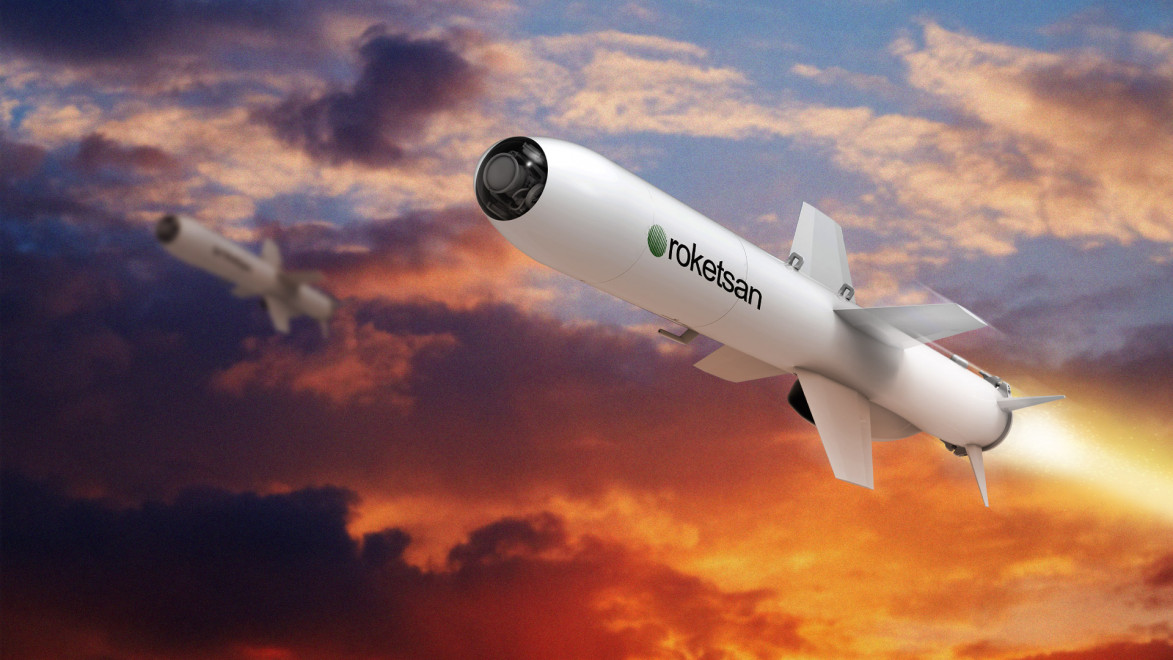Lemme fix that for
@Anmdt
Countdown has Begun for the 2nd Firing Test of ÇAKIR New Generation Cruise Missile!
On the 2nd day of the Naval Systems Seminar held in Ankara on 2-3 November 2023, ROKETSAN Cruise Missile Systems Design Manager Dr. Burcu DÖNMEZ made a nice presentation titled "Incremental Missile Development with Agile Approach, ÇAKIR Example". According to the information shared in the presentation, ROKETSAN plans to develop different navigation capabilities and conduct a new launch with the ÇAKIR New Generation Cruise Missile by the end of 2023.

Against Land and Sea targets from different platforms, including Fighter Planes (4x without Booster), Maritime Patrol Aircraft (2x without Booster) and Helicopters (2x with Booster), UCAV (4x without Booster) and SIDAs (Canister-launched, 4x) Kale Arge product KTJ-1750 Turbojet Engine with 1,750N thrust capacity was selected to strengthen the ÇAKIR Cruise Missile Family, which was designed to be usable and capable of operating in all weather conditions, and the first live fire test was successfully carried out on AKINCI TİHA in May 2023. Launched from AKINCI TİHA from an altitude of 7,000m (after the missile is launched, it descends to a certain altitude with free fall for a while, then starts its TJ engine and moves towards its target) ÇAKIR (without live warhead and IIR Seeker, only with INS/GPS guidance) Cruise Missile Black Sea He hit the target coordinates determined on the water with full accuracy at a speed of Mach 0.9.
ÇAKIR New Generation Cruise Missile, whose total weight is approximately 350kg including the Launch Engine (Booster) and approximately 275kg without the Launch Engine (FM), will be able to reach a range of 150+km when launched from the air and 100+km when launched from the surface, depending on its launch speed and altitude. The basic base configuration of the ÇAKIR New Generation Cruise Missile Family, whose development studies are carried out with an incremental approach, will be equipped with an IIR Seeker, and then the missile will be equipped with an RF Seeker capability. Development work on the Hybrid (IIR+RF) Seeker Head continues within ROKETSAN. ÇAKIR will be equipped with a unique warhead with high performance at low mass.

Members of the ÇAKIR New Generation Cruise Missile Family, which has a modular structure, will have different capabilities and some new technologies that are not yet available (such as the Hybrid Seeker Head), and can be launched from different platforms, will be developed in stages under the Block and Variant approach and made ready for delivery. In this context, the development works of ÇAKIR Block 1 are aimed to be completed in the last quarter of 2023, ÇAKIR Variant T1 in late 2024 and ÇAKIR Block 2 in the middle of 2026. The development work of the variant of ÇAKIR, which can be launched especially from SİDA platforms, is aimed to be completed in mid-2024. In this context, the required canister and carrier group studies have been completed. The booster to be used in the SIDA variant (to be thrown from the canister) has a different design than the booster on the mock-up at the first launch ceremony. Since small marine vessels were specifically targeted, a more compact design was adopted due to size constraints. Subsequently, another variant of the ÇAKIR Family (ÇAKIR SW) to which swarm capabilities are added will be developed.

It will be followed by the LIR variant, which will be equipped with the EH payload. It was announced that the studies on the EH payload are about to be completed. ÇAKIR LIR will be able to operate the KTJ-1750 TJ engine and perform its mission at an altitude of 10,000m. KTJ-1750 TJ Engine gains the ability to operate at 10,000m altitude under Phase-II operation. In this context, a series of operating test activities are expected to be carried out in the Altitude Test Facility in the first half of 2024. The operating altitude conditions of the Altitude Test Mechanism/System, which was established on an area of approximately 2,000 m2 at the Kale Arge Tuzla Development and Test Center within the scope of the 'Turbojet Engines Development Project' and where weather conditions 5,000 m above the ground can be simulated, are still ongoing and will be completed within the first quarter of 2024. Kale Arge Tuzla Development and Test Center, which is expected to be completed, will be increased from 0-5,000 meters to 0-10,000 meters with the renovation work. Under KTJ-1750 Phase-II, flight requirements of KTJ-1750 at 10km altitude will be tested.

It was previously stated that ÇAKIR LIR can be used to jam all EW platforms. Accordingly, while the missile was in the air, it could imitate the radar signature of the F-16 or another aircraft determined by the user in order to force the enemy air defense systems to open their radars. Accordingly, I consider the EH Suite to have a ground lower on the missile. In this case, it is a combination of multiple active radar amplifiers covering different frequencies that will allow it to identify itself to enemy air defense systems as aircraft with different RCS signatures in the HvKK inventory (E-7T HIK, KC-135R Stratotanker, F-16 and F-4E 2020, etc.). It is expected to include the Signature Augmentation Subsystem (SAS). In addition, RF Jammer equipment can be installed on the missile in order to confuse enemy air defense systems when necessary. However, for this type of SEAD mission, ÇAKIR LIR will need to have the ability to loiter over the target area, like the ADM-160B/C and TALD/ITALD tactical decoy targets/jammers available on the market, and the flight duration will need to be 45 minutes+ depending on altitude. Since the thrust power of the KTJ-1750 Turbojet Engine, which has a low fuel consumption value, can be changed during flight, ÇAKIR LIR will be able to hover in the air for a period of time that can meet the needs with a low cruising speed.













